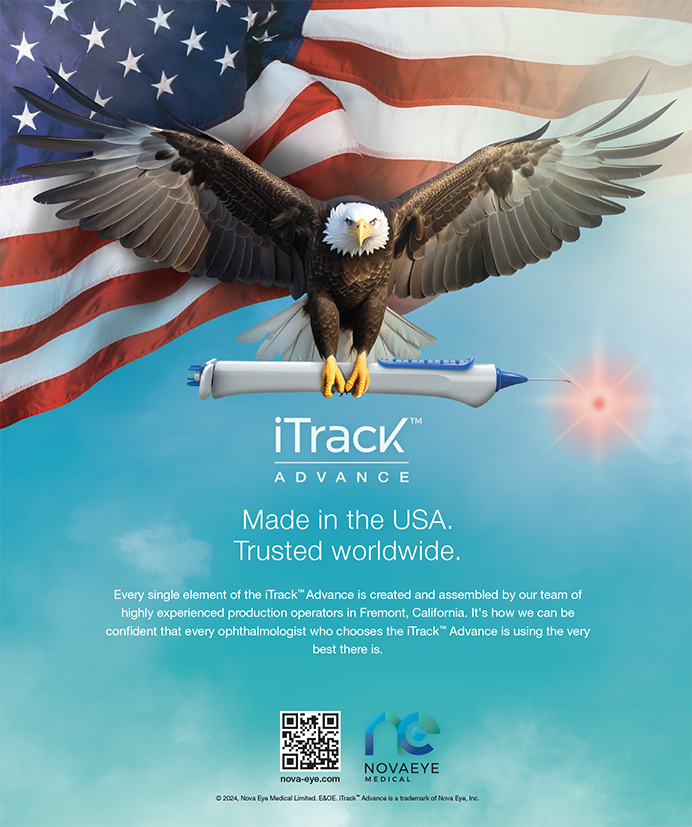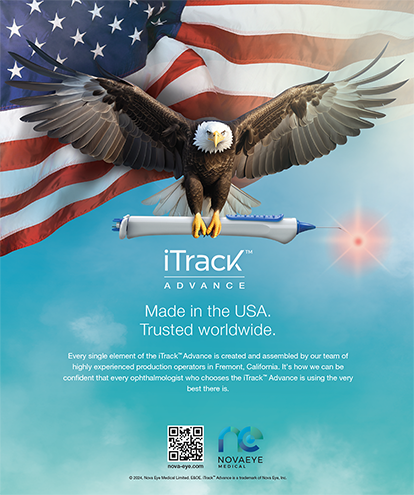
Corneal collagen cross-linking (CXL) with ultraviolet A radiation and riboflavin improves corneal biomechanics in eyes with corneal ectatic disease. CXL substantially strengthens the stroma and has been shown to be effective in stabilizing keratoconus 10 years postoperatively.1 Kanellopoulos and colleagues reported on the application of CXL in post-LASIK ectasia and found that, once the progression of keratoconus has stabilized, it is possible to perform customized PRK to normalize the corneal surface by reducing irregular astigmatism.2,3 The Athens Protocol, which consists of same-day, topography-guided partial PRK and CXL, is effective and safe, provided surgeons respect the delicate biomechanical state of the keratoconic cornea at all times.
CXL in combination with other noninvasive procedures such as conductive keratoplasty (CK), laser thermal keratoplasty, and orthokeratology has also been investigated. The data have not been as promising as for CXL with PRK.
CXL COMBINATIONS
Conductive Keratoplasty
CK is propagated as a method to remodel and modify irregular corneal astigmatism. A low-energy current of high frequency (350 kHz) is applied to the cornea, which heats collagen fibers to 149º (65ºC). Heat induces denaturation and shrinkage of the collagen fibrils, with subsequent increases in corneal curvature at the area of application. For a hyperopic treatment, a number of spots are applied in a concentric manner in the midperiphery of the cornea.
At a Glance
• The remodeling effect obtained by CK may not be permanent
when it is combined with CXL, and the mechanism
of action as to why is not known.
• The effect of CXL combined with thermal keratoplasty,
a technique that remodels the cornea with heat, is beneficial
but transitory.
• The refractive results remained stable substantially
longer in patients who underwent CXL combined with
orthokeratology versus CK and thermal keratoplasty,
but corneal topography returned to baseline 30 days
after the end of contact lens wear.
In 2002, a large clinical trial investigated the use of CK for the correction of low to moderate hyperopia.4 One-year results showed a stable refractive outcome. The study involved healthy eyes with normal corneal biomechanics, but a keratoconic cornea has very different tissue than one that is normal.
The remodeling effect obtained by CK may not be permanent when it is combined with CXL, and the mechanism of action as to why is not known. In a 2009 feasibility study, Kymionis et al treated two keratoconic eyes with CK and subsequent epithelium-off (epi-off) CXL (Dresden protocol, 3 mW/cm2 for 30 minutes). Although the investigators observed significant and immediate improvement in corneal irregularity, the improvement disappeared 2 and 3 months after CK and CXL, respectively.5
A noncommercial, physician-sponsored research group, CXLUSA, has reported favorable results for CK combined with epithelium-on (epi-on) CXL.6 Although the proposed combination of CK and epi-on CXL would be ideal, the mechanism of action is hard to understand. There are no published clinical studies of epi-on CXL to show the same biomechanical effect as epi-off CXL. If this combination treatment were effective and produced long-term results, the “emphasis” would be on CK, which has failed to show long-term stability in previous studies.4,5 My recommendation is to wait on implementing combined CK and CXL until enough clinical results and peer-reviewed data can prove its efficacy and safety. Even if surgery temporarily improves or stabilizes the cornea, a risk-benefit analysis advises against performing the procedure. The first aim of a surgeon should be to do no harm. Even combined epi-on CXL and CK represents a major change in stromal structure and function. From my perspective, it would be unethical to perform a procedure if, 6 months postoperatively, the outcome equals sham treatment.
Thermal Keratoplasty
Similar to CK, thermal keratoplasty is a technique for remodeling the cornea through the application of heat. The energy is delivered either via a Holmium laser or via microwaves. Initially designed as a refractive procedure, thermal keratoplasty has produced similar results to CK, with a substantial but only transitory effect on corneal curvature.7 A study published in 2012 investigated a formerly commercially available combination of microwave thermal keratoplasty and CXL and found that, similar to CK combined with CXL, the effect was beneficial but transitory.7
Orthokeratology
Orthokeratology temporarily reshapes the cornea via apical pressure provided by a rigid contact lens that is worn overnight. The main mechanism of action is presumably a remodelling of the corneal epithelium due to pressure. The involvement of the anterior stroma in these changes remains unclear. Because CXL also changes the ability of the corneal stroma to swell, a combination of orthokeratology and CXL sounds promising. Calossi et al investigated the effect of combined orthokeratology and CXL. Although the refractive results after overnight wear of the contact lens remained stable substantially longer in patients who underwent an additional CXL procedure, corneal topography returned to baseline 30 days after the end of orthokeratology wear.8
CONCLUSION
The concept of combining CXL with noninvasive procedures to reshape the cornea is very interesting but one that currently fails to provide stable results over more than 6 months. It is unclear at this time how future research should be targeted to improve clinical outcomes. Other techniques to modify the shape of the cornea might profit from being combined with CXL. n
1. Raiskup F, Theuring A, Pillunat LE, Spoerl E. Corneal collagen crosslinking with riboflavin and ultraviolet-A light in progressive keratoconus: ten-year results. J Cataract Refract Surg. 2015;41(1):41-46.
2. Kanellopoulos AJ, Binder PS. Management of corneal ectasia after LASIK with combined, same-day, topography-guided partial transepithelial PRK and collagen cross-linking: the Athens Protocol. J Refract Surg. 2011;27(5):323-331.
3. Hafezi F, Kanellopoulos J, Wiltfang R, et al. Corneal collagen cross-linking with riboflavin and ultraviolet A to treat induced keratectasia after laser in situ keratomileusis. J Cataract Refract Surg. 2007;33:2031-2040.
4. McDonald MB, Davidorf J, Maloney RK, et al. Conductive keratoplasty for the correction of low to moderate hyperopia: 1-year results on the first 54 eyes. Ophthalmology. 2002;109(4):637-649; discussion 649-650.
5. Kymionis GD, Kontadakis GA, Naoumidi TL, et al. Conductive keratoplasty followed by
collagen cross-linking with riboflavin-UV-A in patients with keratoconus. Cornea. 2010;29(2):239-243.
6. Dalton M. Combining CXL and CK. Eyeworld. 2014. http://www.eyeworld.org/article-combining-cxl-and-ck. Accessed June 8, 2015.
7. Vega-Estrada A, Alio JL, Plaza Puche AB, Marshall J. Outcomes of a new microwave procedure followed by accelerated cross-linking for the treatment of keratoconus: a pilot study. J Refract Surg. 2012;28(11):787-793.
8. Calossi A, Romano F, Ferraioli G, Romano V. Orthokeratology and riboflavin UV-Acorneal cross-linking in keratoconus. J Emmetropia. 2010;1:126-131.
Section Editor Kathryn M. Hatch, MD
• Massachusetts Eye and Ear Infirmary, Waltham, Massachusetts
• (781) 890-1023; Kathryn_hatch@meei.harvard.edu
Section Editor Colman R. Kraff, MD
• director of refractive surgery, Kraff Eye Institute, Chicago
Farhad Hafezi, MD, PhD
• chief medical officer, The ELZA Institute, Dietikon/Zurich,
Switzerland
• professor of ophthalmology, faculty of medicine, University of
Geneva, Switzerland
• clinical professor of ophthalmology, Keck School of Medicine,
University of Southern California, Los Angeles
• fhafezi@elza-institute.com


